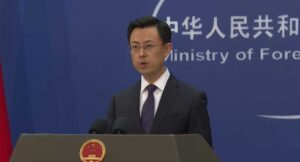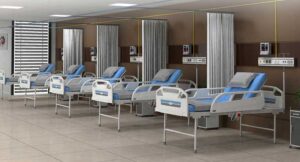Oregon hospitals are operating at a loss or often with thin profit margins, with patients boarding in emergency rooms and rural facilities forced to consider closing maternity wards.
The space between net patient revenues and operating costs continues to rise, putting more than half of Oregon’s hospitals in the red, hospital officials said in a Wednesday press conference.
The Medicaid-funded Oregon Health Plan, which insures more than one in three Oregonians, plays a role in the ongoing financial woes, said Becky Hultberg, president and CEO of the Hospital Association of Oregon. Rising operating costs, primarily labor, are also a big driver in hospital expenses exceeding income, she said.
The association, which represents 61 hospitals in the state, wants the Legislature to work on adequately funding the state’s Medicaid program and take other steps, like making it easier for hospitals to discharge patients when they are ready to exit the hospital into other settings, like long-term care.
“It’s becoming clear, unfortunately, that this is our new normal,” Hultberg said. “And we’re at an inflection point. Like any organization or household, hospitals can’t lose money indefinitely, but we all know that hospitals are essential to community health.”
The Oregon Health Plan, which covers 1.3 million people, pays 56 cents for every dollar of care provided to patients on Medicaid, Hultberg said. In 2023, that underpayment was $1 billion.
However, association officials said they realize it would take time to fix the problem but they’d like action on it this session.
“We are not coming forward to ask for $1 billion this session, but what we are saying is we have to begin to close the gap between what it costs to provide care for Oregon Health Plan members and what hospitals are paid,” Hultberg said. “This will likely be a multi-session conversation. We want to start the conversation now.”
The group supports a range of proposals this session that would aid their finances and access to health care. They include items in Gov. Tina Kotek’s budget proposal. She is calling for an extra $35 million in general funding for hospital maternity rates, a $4 million increase in graduate medical education funding and another $25 million in payments for hospitals with high levels of patients who are uninsured or on Medicaid.
The hospitals group also supports legislation recommendations from a state task force that examined the barriers that keep hospitals from discharging patients who are ready to leave and move to another setting, like a residential long-term care facility or nursing home. The task force recommended a variety of changes so people are not stuck in hospital beds, navigating red tape that blocks them from qualifying to enter another facility when they no longer need a hospital bed.
Maternity wards
The financial problems affects hospitals across the state.
In rural Baker City, Saint Alphonsus Medical Center closed its maternity ward in 2023, citing high costs. Salem Hospital, which is part of Salem Health, is also grappling with maternity costs, said Cheryl Nester Wolfe, a registered nurse and president and CEO of Salem Health. She said the Oregon Health Plan on average reimburses maternity services for about 60% of the costs to the hospital. Salem Health had more than 3,000 newborns in 2024.
In the 2023 fiscal year, the difference between what Medicaid paid and the hospital’s costs for maternity services was $66 million, Nester Wolfe said.
“Patients and their access to care is what matters most,” Nester Wolfe said. “So providers have for years found ways to make up for reimbursement shortfalls, but this patchwork approach is not sustainable.”
The problem is acute in rural Oregon. Without maternity services, patients are forced to drive even longer distances to deliver babies or in emergencies.
Daniel Grigg, the chief executive officer of Wallowa Memorial Hospital in Enterprise, located in eastern Oregon, said his hospital is committed to keeping its maternity services open.
One reason for the high costs is because the number of deliveries is smaller in rural hospitals. Yet those facilities still need on-call staff to offer those services, including doctors, nurses and anesthesia staff, he said.
He said he supports the idea of “standby pay,” which would help rural hospitals cover the cost of on-calls staff. US Sen. Ron Wyden, D-Oregon, has a proposal in Congress targeting the problem. Grigg said something similar at the state level would help.
“Standby pay would significantly help ensure ongoing access to care,” he said. Oregon Capital Chronicle









